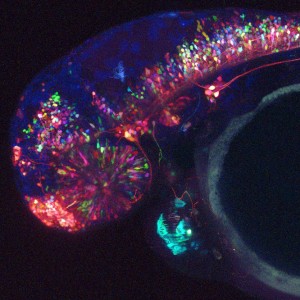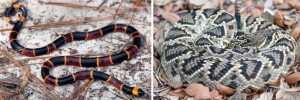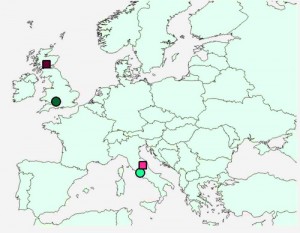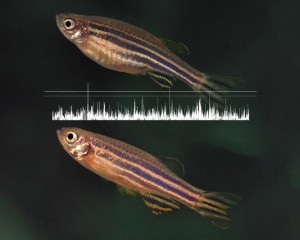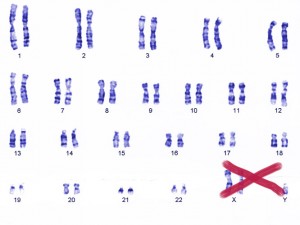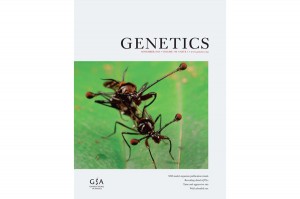Enter your address to receive notifications about new posts to your email.
Articles by Cristy Gelling (96 results)
-
Mutant Screen Report: touchy worms
Do you have results from a mutant screen to publish? G3’s Mutant Screen Reports allow you to publish succinct descriptions of useful genetic screens in a convenient format. The Reports fulfill one of G3’s goals: to make data from screens available to the community in a timely fashion. If you gently touch the front half…
-
Chasing Brainbows
Whether your computer screen displays a spreadsheet, a movie, or a LOLcat, you’re seeing pinpoints of light in only three colors: red, green, and blue. But by varying the relative intensity of these three components, a pixel can transform into any one of a spectrum of millions of colors. The same principle lies behind the…
-
Vexed: why doesn’t eastern coral snake venom vary?
When an eastern diamondback rattlesnake bites its prey, it injects a cocktail of toxic proteins and peptides that attack on multiple fronts. These toxins destroy blood vessels, block the blood clotting cascade, cause necrosis, and inflict crippling pain. But the precise recipe for this noxious mix is generally thought to depend on where the snake…
-
Mapping granny: ancestry inference for admixed individuals
Like all biological populations, human groups can’t be neatly divided. Real populations are connected to each other, and their borders are blurred by migration and mixing. But when inferring ancestry of an individual from genetic data, populations are typically simplified into tidy, discrete units. In the December issue of G3: Genes|Genomes|Genetics, Yang et al. describe…
-
New G3 editors: de los Campos, Marshall, Myers, Ross-Ibarra, Slotte & Warburton
G3 welcomes new Associate Editors Gustavo de los Campos, Christian Marshall, Chad Myers, Jeff Ross-Ibarra, Tanja Slotte, and Marilyn Warburton! GUSTAVO DE LOS CAMPOS University of Alabama at Birmingham The academic interests of Gustavo de los Campos center on statistical learning methods with emphasis on applications in quantitative genetics. He completed two MS and a…
-
Wild zebrafish sex: a lab mystery solved
Laboratory zebrafish hide a dirty little secret. Although the tiny fish have proven to be a vital model of vertebrate development and disease genetics, zebrafish reproduction—at least in the lab—has wildly variable outcomes. Offspring sex ratios can vary from extremely male-biased to extremely female-biased, depending on which breeding pairs serve as parents. The reason for…
-
ASHG Meeting Report: The X-factor in complex disease
One of the major risk factors for autoimmune diseases is being born with two copies of the X chromosome. For example, women—who typically carry two Xs—face around ten times the risk of lupus, while men with lupus are around 15 times more likely than the general population to carry two Xs and a Y (Klinefelter…
-
The differences between fierce and friendly rats
In the early 1970s, a couple of hundred wild rats near the Siberian city of Novosibirsk were rounded up by scientists for an ambitious experiment to understand how animals evolve during domestication. Dimitry Belyaev and his colleagues—known for their related project on domesticating foxes—split the rats into two groups. With one group, the researchers tried to replicate…
-
How the cat got its spots (and hearing problems)
Mammal domestication is a hot topic, with many groups releasing detailed genetic studies of different models of domestication. This week we’ll look at the genetics of cat colors and follow up on the recently published domestication syndrome hypothesis. Next week we’ll feature new research on experimental rat domestication. Stay tuned! Does your cat have a…
-
GSA journals partner with bioRxiv
Today we announced good news for our authors who use the bioRxiv preprint server! In partnership with Cold Spring Harbor Laboratory, the GSA journals GENETICS and G3 are rolling out a new feature that allows authors to submit their manuscript for peer review at one of our journals and, if they choose, simultaneously post it…
-
Distal eQTLs, angry rats & zebrafish sex: November GENETICS highlights
The November issue of GENETICS is out today! Check out the highlights below or the full Table of Contents here. Genetic influences on brain gene expression in rats selected for tameness and aggression, pp. 1277–1290 Henrike O. Heyne, Susann Lautenschläger, Ronald Nelson, François Besnier, Maxime Rotival, Alexander Cagan, Rimma Kozhemyakina, Irina Z. Plyusnina, Lyudmila Trut, Örjan…


